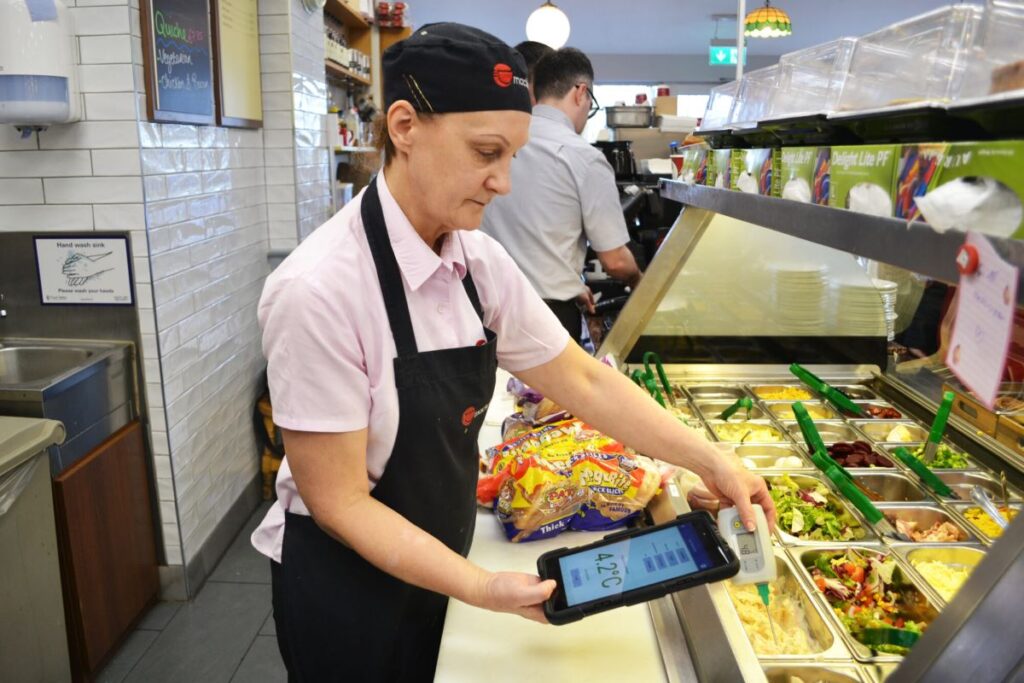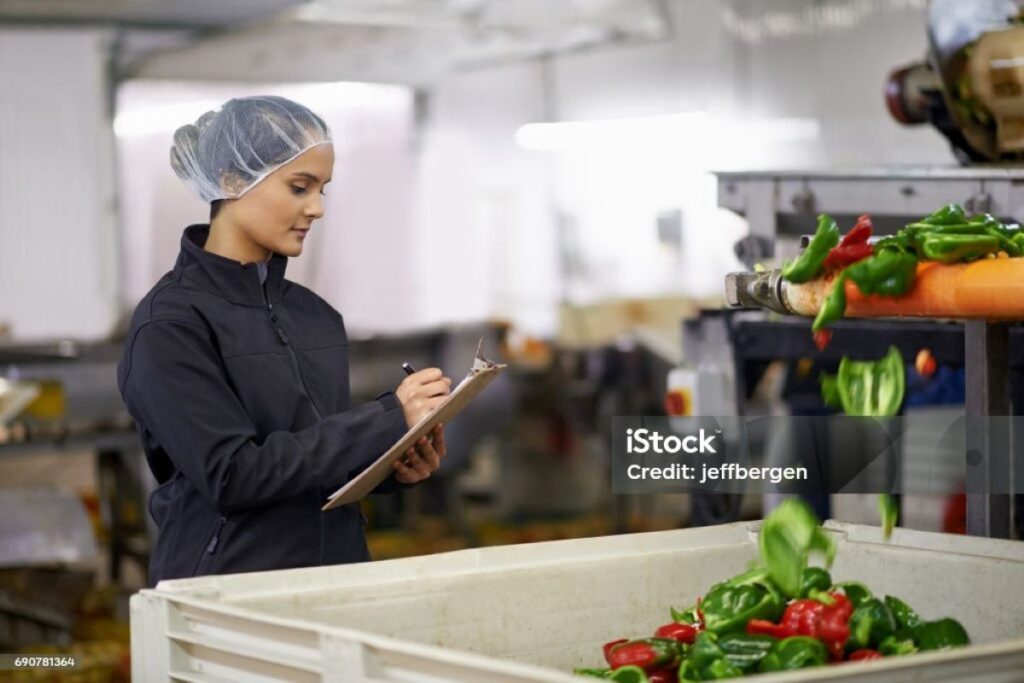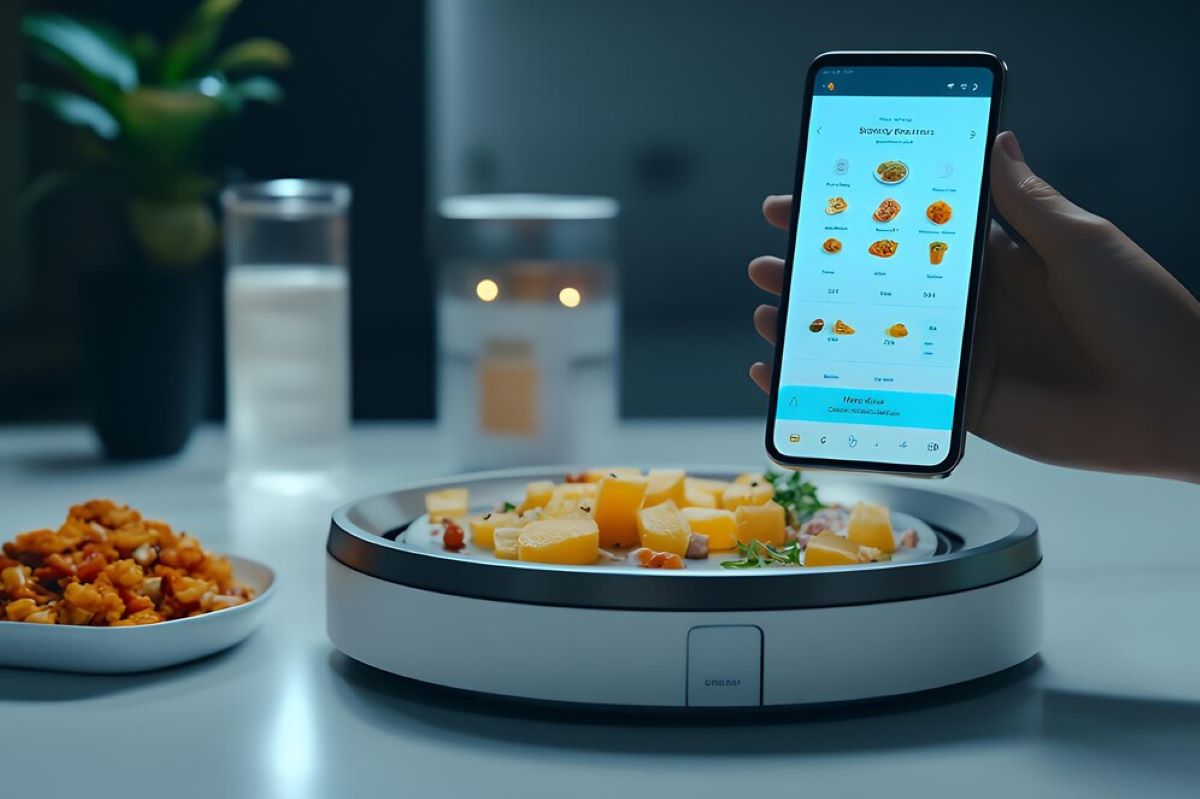Remote Temperature Monitoring System Setup for Multi-Site Kitchens
Temperature control is a crucial part of ensuring food safety in commercial kitchens. For businesses with multiple locations, keeping track of temperatures consistently can be a complex task that requires careful attention and strong systems.
Challenges in Temperature Management for Multi-Site Kitchen Operations
Multi-site kitchen operations face distinct hurdles in temperature management:
- Time-consuming manual checks across different locations
- Inconsistent reporting methods between sites
- Delayed response to temperature changes
- Complex compliance documentation requirements
- Variations in staff training affecting monitoring accuracy
The Solution: Remote Temperature Monitoring Systems
Remote temperature monitoring systems emerge as a transformative solution for these challenges. These advanced systems provide real-time temperature data across all kitchen locations through a centralised platform. The technology enables automated monitoring, instant alerts, and comprehensive reporting capabilities that streamline operations while enhancing food safety standards.
By implementing remote temperature monitoring systems, multi-site kitchen operators can maintain precise control over their food safety protocols, ensure regulatory compliance, and protect their brand reputation through consistent, reliable temperature management practices.
Understanding Remote Temperature Monitoring Systems
Remote temperature monitoring systems consist of three essential components working together to provide accurate, real-time temperature data across various kitchen locations:
1. Wireless Sensors
- Battery-powered devices equipped with precision temperature probes
- Strategically placed in refrigerators, freezers, and food preparation areas
- Capable of measuring temperatures from -40°C to +125°C with ±0.5°C accuracy
2. Gateway Devices
- Central hub collecting data from multiple sensors
- Processes and encrypts temperature readings
- Transmits information securely to cloud servers
- Range of up to 100 metres in typical kitchen environments
3. Cloud Platform Infrastructure
- Secure servers storing historical temperature data
- Advanced algorithms for data analysis and pattern recognition
- User-friendly dashboards displaying real-time readings
- Automated alert generation for temperature deviations
These systems use radio frequency technology, enabling sensors to wirelessly transmit data through walls and kitchen equipment. The sensors perform regular temperature checks at set intervals, usually every 5-15 minutes.
The cloud-based platform acts as a central command centre, allowing kitchen managers to:
- Access temperature data from any device with internet access
- Generate detailed reports for compliance purposes
- Set custom temperature limits for different storage units
- Monitor multiple kitchen locations from a single dashboard
The platform’s design ensures data security through encryption methods while maintaining constant connectivity for real-time monitoring capabilities.
Key Features of Remote Temperature Monitoring Systems for Multi-Site Kitchens
Remote temperature monitoring systems offer essential features designed to streamline kitchen operations across multiple locations. These systems deliver three critical capabilities:
1. 24/7 Temperature and Humidity Tracking
- Automated data collection at preset intervals
- Comprehensive temperature history logs
- Detailed humidity level monitoring
- Custom reporting schedules
- Data visualisation through graphs and charts
2. Smart Alert System
- Instant notifications via SMS or email
- Customisable temperature thresholds
- Alert escalation protocols
- Response time tracking
- Historical alert logs
3. Multi-Site Management Capabilities
- Single dashboard view of all locations
- Unlimited device connections
- Hierarchical access control
- Cross-location performance comparison
- Centralised data storage
The system’s architecture supports rapid scaling, allowing businesses to add new locations or monitoring points without disrupting existing operations. Each connected device automatically synchronises with the central platform, maintaining consistent monitoring standards across all kitchen sites.
These features create a robust monitoring ecosystem that adapts to specific operational needs while maintaining uniform safety standards. The automated nature of these systems reduces human error in temperature monitoring tasks, providing reliable data for both immediate operational decisions and long-term analysis.
Installation and Integration Considerations
Setting up remote temperature monitoring systems requires minimal technical expertise. The wireless battery-powered sensors eliminate complex wiring needs, allowing quick placement in critical monitoring areas. These sensors operate independently for extended periods, reducing maintenance requirements.
Long-range radio communication technology enables reliable data transmission across multiple kitchen sites. The robust signal penetrates walls and other structural barriers, maintaining consistent connectivity even in challenging environments. This technology supports distances up to several kilometres between sensors and gateways, making it ideal for large-scale operations.
The system’s integration capabilities extend to existing building management infrastructure:
- HVAC Systems: Direct connection through BACnet® protocol
- Refrigeration Controls: Integration via LonWorks® technology
- Building Automation: Fox protocol compatibility
These integration options create a unified monitoring ecosystem, streamlining operations through:
- Centralised control interfaces
- Synchronised data collection
- Automated system responses
- Real-time performance optimisation
The scalable architecture accommodates additional sensors and locations as business needs grow, ensuring long-term system viability.

Benefits of Implementing Remote Temperature Monitoring Systems in Multi-Site Kitchens
Remote temperature monitoring systems revolutionise operational efficiency in multi-site kitchen environments through three key advantages:
1. Enhanced Food Safety Management
- Real-time temperature data enables immediate detection of potential safety risks
- Automated alerts trigger rapid corrective actions before food spoilage occurs
- Digital documentation creates comprehensive audit trails for food safety compliance
- Remote access allows managers to monitor multiple locations simultaneously
2. Labour Optimisation
- Elimination of manual temperature checks saves staff time
- Automated record-keeping reduces administrative burden
- Digital checklists streamline daily operational tasks
- Staff can focus on food preparation and customer service
3. Cost-Effective Operations
- Early detection of equipment malfunctions prevents costly food waste
- Precise temperature control reduces energy consumption
- Performance analytics identify opportunities for efficiency improvements
- Preventive maintenance scheduling extends equipment lifespan
The implementation of these systems delivers measurable results:
- Up to 30% reduction in food waste
- 25% decrease in staff time spent on compliance tasks
- 15-20% improvement in energy efficiency
These quantifiable benefits demonstrate the transformative impact of remote temperature monitoring on multi-site kitchen operations, creating a more efficient, safe, and profitable food service environment.
Compliance and Record-Keeping Advantages
Remote temperature monitoring systems make regulatory compliance much easier. Instead of being a difficult task, it becomes a smooth process. With automated reporting, we can now generate detailed records every day, week, and month that meet strict food safety standards and audit requirements.
Centralised Digital Repository for Temperature Data
All temperature-related data is stored securely on a SaaS platform, which acts as a centralised digital repository:
- Real-Time Documentation: Instant recording of temperature readings eliminates manual entry errors
- Audit Trail Creation: Automatic tracking of corrective actions and system modifications, adhering to the audit trail requirements
- Custom Report Generation: Tailored reports based on specific compliance requirements
24/7 Accessibility for Quick Responses
The platform’s 24/7 accessibility through any internet-connected device enables:
- Quick responses to audit requests
- Immediate access to historical data
- Cross-location monitoring and verification
Reducing Compliance Risks with Automated Record-Keeping
These automated record-keeping features significantly reduce compliance risks by:
- Eliminating gaps in temperature monitoring records
- Providing verifiable proof of consistent food safety practices
- Maintaining accurate, tamper-proof documentation
Protecting Operational Information with Robust Data Security Measures
The system’s robust data security measures protect sensitive operational information while maintaining brand integrity. Digital records are encrypted, backed up, and stored in compliance with data protection regulations, creating an unbreakable chain of documentation that safeguards against potential compliance issues and protects brand reputation.
Customisation and Support Services
Remote temperature monitoring systems offer extensive customisation options to match specific kitchen requirements. Tailor-made checklists adapt to diverse operational needs:
- Kitchen-Specific ParametersTemperature thresholds for different storage areas
- Monitoring schedules aligned with peak hours
- Custom alert settings for various food types
The implementation process includes personalised guidance through:
- Setup SupportDiscovery calls to assess operational needs
- Interactive demo sessions
- Step-by-step configuration assistance, similar to the setup guide provided by MacroFactor
A dedicated support system maintains smooth operations with:
- 24/7 AssistanceLive chat technical support
- Remote troubleshooting
- System updates and maintenance guidance
The platform’s flexibility allows for adjustments as operational needs evolve. Kitchen managers can modify checklists, update monitoring parameters, and refine alert settings through an intuitive interface. This adaptability ensures the system remains aligned with changing food safety requirements and operational workflows across multiple kitchen sites.
Moreover, these customisation options extend beyond just monitoring parameters, allowing for a comprehensive tailoring of the system to meet unique kitchen demands.
Industry Applications Beyond Kitchens
Remote temperature monitoring systems demonstrate remarkable versatility across diverse sectors. The hospitality industry has embraced these systems in:
- Hotels and resorts – monitoring guest room temperatures
- Conference centres – maintaining food service areas
- Restaurants and cafes – ensuring proper storage conditions
Healthcare facilities utilise these systems for critical temperature-sensitive areas:
- Medical storage units
- Pharmaceutical refrigerators
- Laboratory environments
- Blood bank storage facilities
The aged care sector benefits from automated monitoring solutions through:
- Kitchen temperature compliance
- Medication storage monitoring
- Resident room climate control
- Food transportation tracking
Child care centres implement these systems to maintain strict safety standards:
- Food preparation areas
- Milk storage facilities
- Nappy changing room temperatures
- Indoor play area climate control
Each sector’s unique requirements are met through customisable alert thresholds, specialised reporting templates, and sector-specific compliance documentation. The adaptability of remote monitoring technology creates standardised safety protocols across multiple locations while addressing industry-specific challenges. Check out more about Why Food Safety Traceability Software Matters in 2025.

Future Trends in Remote Temperature Monitoring for Multi-Site Operations
The world of remote temperature monitoring is constantly changing and improving thanks to new technologies. With the help of advanced analytical tools, we can now predict when maintenance will be needed and fix problems before they happen. This means less time wasted on unexpected breakdowns and smoother operations overall.
Key Technological Developments:
- AI-powered algorithms that detect subtle temperature variations and predict system anomalies
- Machine learning capabilities for automated temperature adjustment recommendations
- Real-time visualisation dashboards displaying critical operational metrics
The integration of user-friendly interfaces has transformed decision-making processes across multiple sites. Modern platforms feature intuitive dashboards with customisable widgets, allowing managers to:
- Access instant performance metrics
- Generate automated reports
- Visualise trend analysis across different locations
IoT-enabled devices are changing the game by:
- Seamlessly integrating with existing kitchen equipment
- Improving data collection accuracy
- Expanding sensor networks for comprehensive monitoring
These technological advancements create a more connected and efficient monitoring ecosystem. The combination of smart sensors, advanced analytics, and automated systems provides kitchen managers with unprecedented control over their operations. As technology continues to advance, remote temperature monitoring systems will become increasingly sophisticated, offering new possibilities for operational excellence and food safety management.

